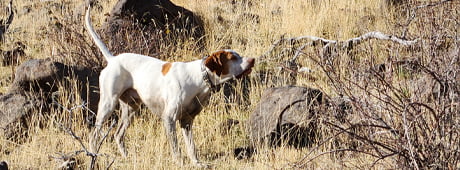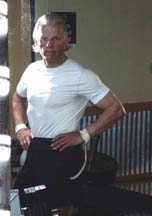No products in the cart.
Dog Meets Rattler

Bird Hunting in the Uplands
Story and Photos by Drew Wahlin
Jake, my Miller English pointer, was about a hundred yards away but I couldn’t see him in the grayish-blue colors of the sagebrush-covered landscape high in west-central Idaho.
Only the sound of his electronic collar over the wind indicated where he held an upland bird covey. I navigated through the vast plateau’s waist-high sagebrush, listening to get a bearing on Jake’s exact location. I spotted him but had advanced only twenty-five yards in a direct path toward him when the all-too-familiar sound of a buzzing rattler startled me. It was less than five feet from my legs, which sent panic through my senses. I stopped, backed away, collected myself, and took a photo.
Rattlers are part of the ecology of Idaho’s upland birds. I think they should be considered necessary residents of the habitat and not eliminated. Once I photographed the snake—an act that to me is an important part of the value of being in Idaho’s nature—the next step was to get onto Jake’s point and hopefully harvest a bird. Jake was still locked solidly on our quarry when I reached him. A covey of Hungarian partridge erupted into the air as they detected my presence.
I downed a bird and Jake made a staggering advance toward it for the retrieve. His gait immediately made me suspect he had been bitten by the rattler, which had been in a direct line to Jake’s point. He made it to the bird ahead of my arrival but didn’t budge after locating it. He didn’t look at me when I arrived and was panting heavily.
I checked him over and, sure enough, two drops of blood about one inch apart, the telltale sign of a rattlesnake bite, were on top of his left foot, which was rapidly swelling. I needed to get him off the plateau and to a vet. By this time, the temperature was hovering in the high eighties and I cooled down his body with water from my pack.
This content is available for purchase. Please select from available options.
Register & Purchase Purchase Only
Register & Purchase Purchase Only

